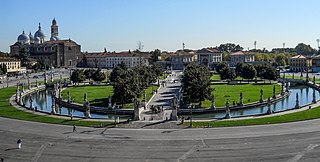
Padua is a city and comune (municipality) in Veneto, northern Italy, and the capital of the province of Padua. The city lies on the banks of the river Bacchiglione, 40 kilometres west of Venice and 29 km southeast of Vicenza, and has a population of 214,000. It is also the economic and communications hub of the area. Padua is sometimes included, with Venice and Treviso, in the Padua-Treviso-Venice Metropolitan Area (PATREVE) which has a population of around 2,600,000.
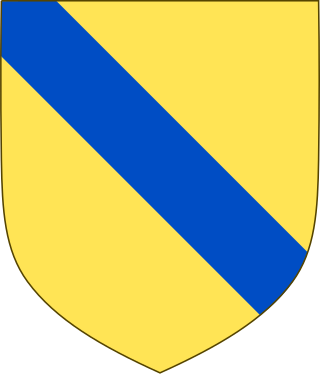
The House of Morosini was a powerful Venetian noble family that gave many doges, statesmen, generals, and admirals to the Republic of Venice, as well as cardinals to the Church.
Achille Tramarin was an Italian Venetist politician.
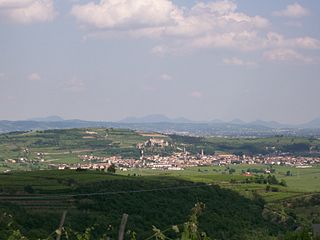
Soave is a small comune of the Veneto region in the Province of Verona, northern Italy, with a population of roughly 6,800 people.

Francesco II da Carrara, known as Francesco il Novello, was Lord of Padua after his father, Francesco I il Vecchio, renounced the lordship on 29 June 1388; he was a member of the family of Carraresi. He married Taddea, daughter of Niccolò II d'Este, Lord of Modena.

The House of Carrara or Carraresi (da Carrara) was an important family of northern Italy in the 12th to 15th centuries. The family held the title of Lords of Padua from 1318 to 1405.

Francesco I da Carrara, called il Vecchio, was Lord of Padua from 1350 to 1388.
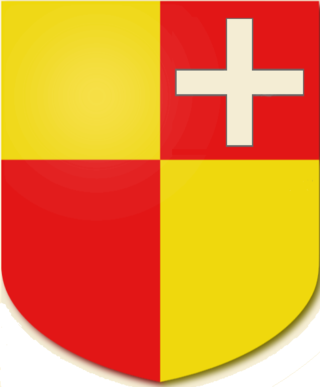
The Calbo family later on Calbo-Crotta is an Italian noble mercantile family originating from Padua and then established in Venice starting the year 891. It became part of the Great Council of Venice after the battle of Genoa in 1310. They were given nobility title in 1817 and were part of Venetian nobility.

The Valmarana family is an aristocratic family in Vicenza, one branch of which also held Venetian patrician status. Its motto was "Plus Ultra" (Further). They were named after the village of Valmarana in the Berici Hills, where they held fiefs from the bishop of Vicenza.
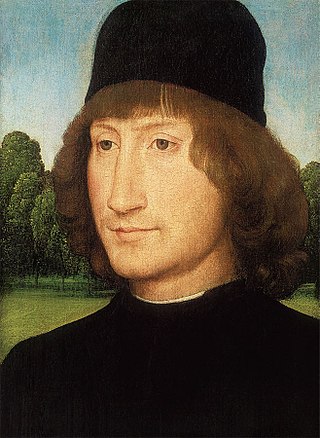
Sforza Secondo Sforza was an Italian condottiero.

The House of Buzzaccarini is an ancient Italian noble family from Padua that had a notable role in the history of the Republic of Venice.
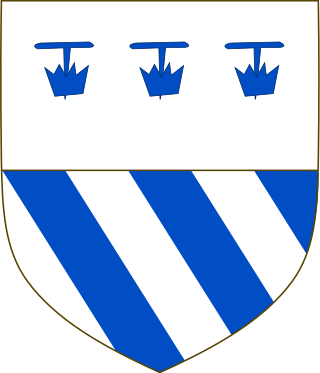
The Moro family was a patrician family of the Republic of Venice.
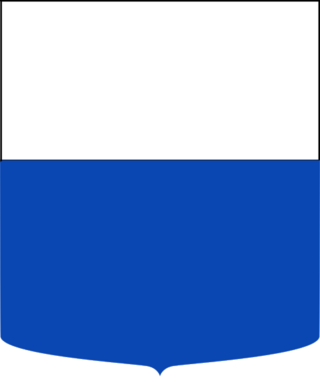
The Zulian family was an old Venetian noble family. The place from whence the Zulian came to Venice is unclear; however, the family is considered one of the first that moved to Venice, and thus one of the oldest Venetian and Italian noble families. The family produced tribunes, and in the early 8th century gained dukedom, as a family member rose to the position of Maestro dei cavalieri. The family produced several prominent Venetian figures, including statesmen, generals, patrons and magnates.

Vittoria Farnese, also known as Vittoria, Princess of Parma, and by her married name Vittoria Farnese della Rovere, was an Italian noblewoman, Duchess consort of Urbino from 1548 until 1574 by marriage to Guidobaldo II della Rovere, Duke of Urbino.
This is an alphabetical index of people, places, things, and concepts related to or originating from the Republic of Venice. Feel free to add more, and create missing pages.
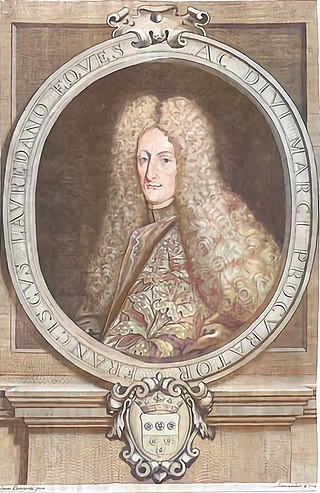
Francesco Loredan was a Venetian magnate and nobleman of the Loredan family, and an ambassador of the Republic of Venice to Vienna during the peace negotiations between the Ottoman Empire and the Holy League, which resulted in the Treaty of Karlowitz (1699).

The Venetian patriciate was one of the three social bodies into which the society of the Republic of Venice was divided, together with citizens and foreigners. Patrizio was the noble title of the members of the aristocracy ruling the city of Venice and the Republic. The title was abbreviated, in front of the name, by the initials N.H., together with the feminine variant N.D.. Holding the title of a Venetian patrician was a great honour and many European kings and princes, as well as foreign noble families, are known to have asked for and obtained the prestigious title.
Heraldry, as a scholarly discipline that deals with the study and origin of various symbols and elements, emerged in Albania towards the end of the 13th century. Over time, it has evolved as an inseparable component of European heraldry, encompassing its advancements, shifts and accomplishments.

Longhi is an Italian surname of ancient origin, initially spelled as Longo, of which Longhi is plural. Some groups gained great power in the Middle Ages and into the modern era, holding dozens of titles of nobility and vast estates in north-central Italy. The surname appears in many dialectal variants, such as Longis, Longoni, Longa, Longhù, Longi, Longu and others. In addition to the Longus, the plural Longi is usually found in Latin texts. However, since in Italian longo means "long", "tall", "ancient" or "long", and is a word of common usage, it is likely that many of the numerous groups scattered throughout Italy had independent origins.
Cornelia Sale Mocenigo Codemo was an Italian poet and translator.



















